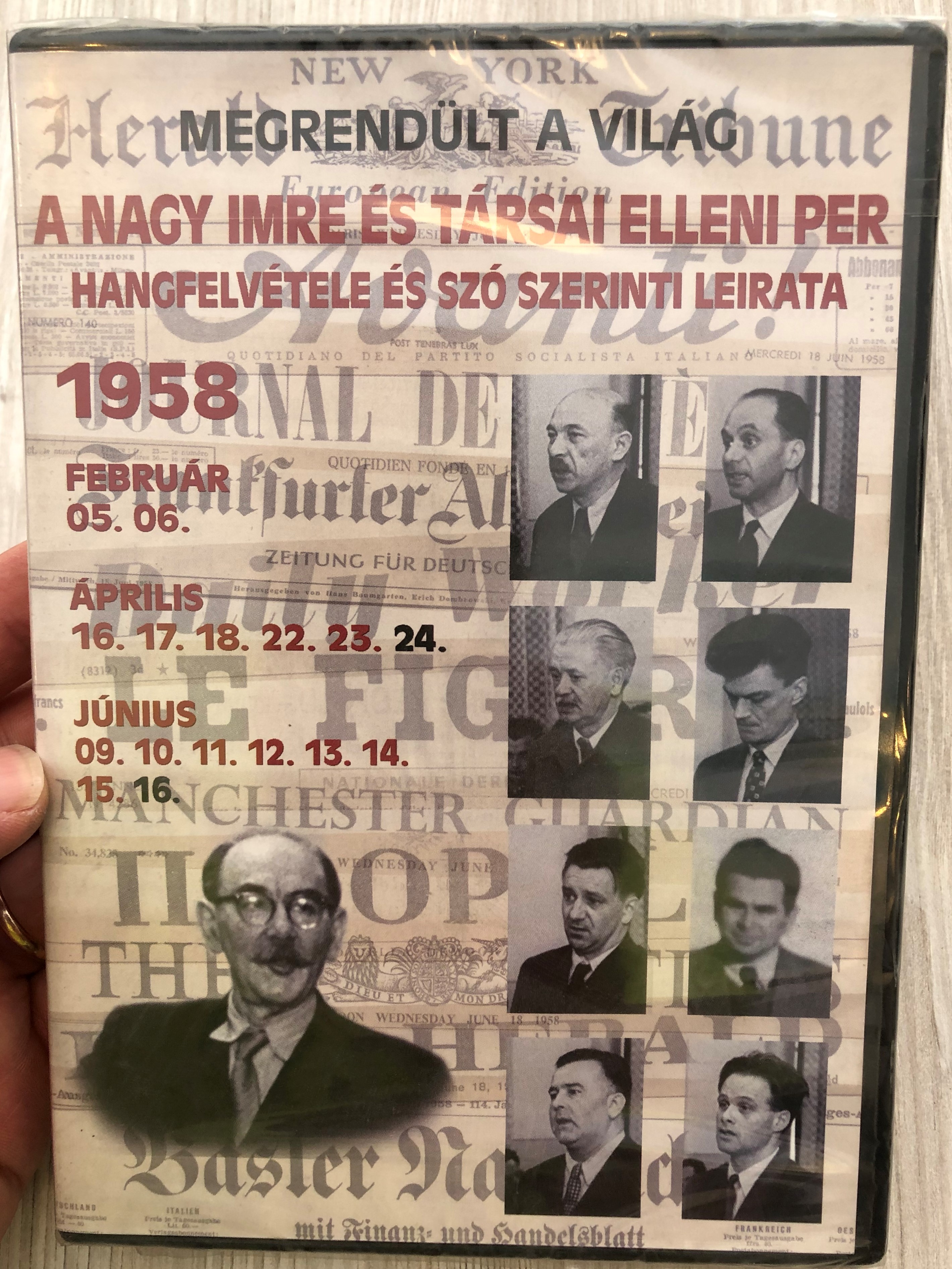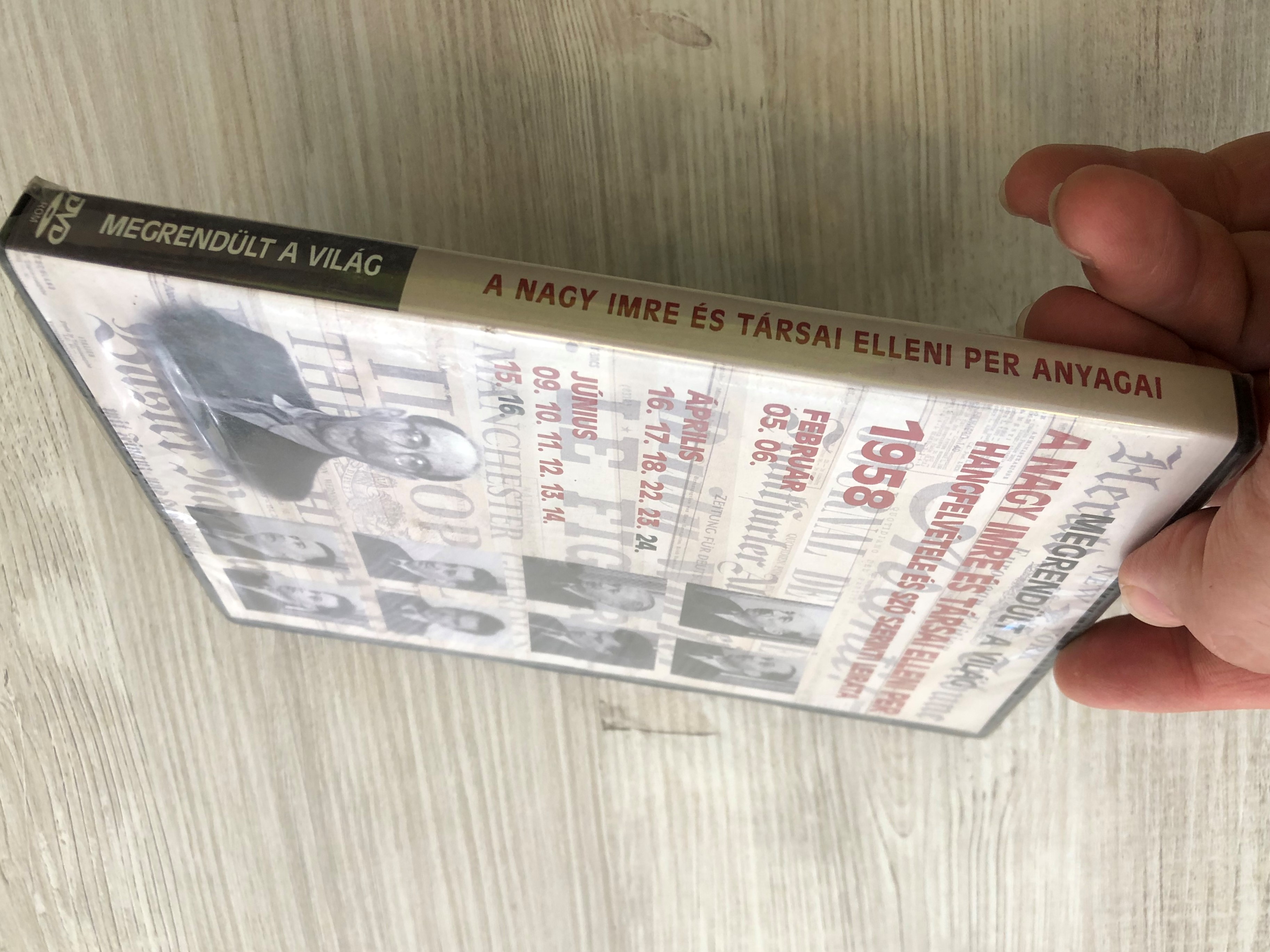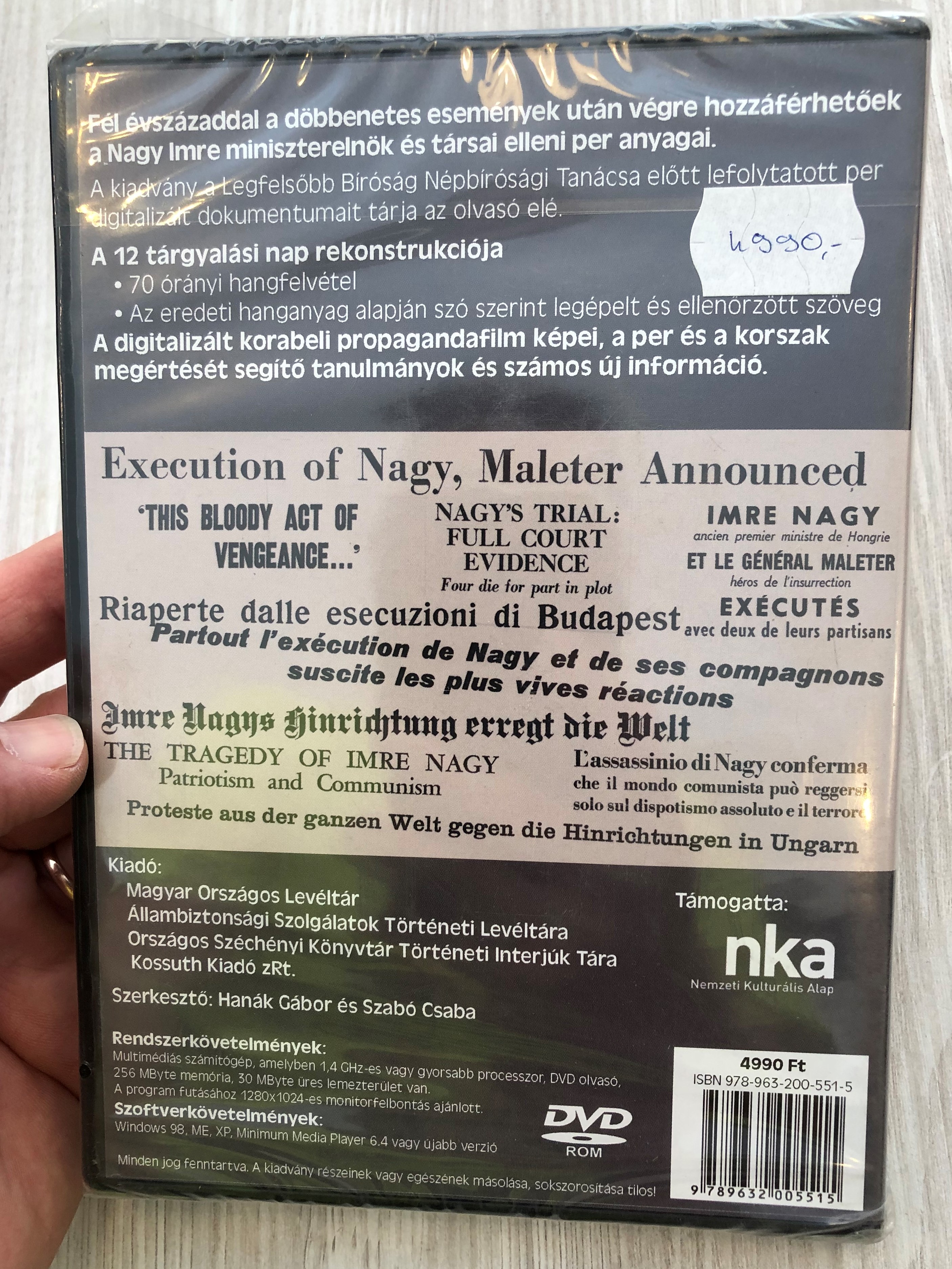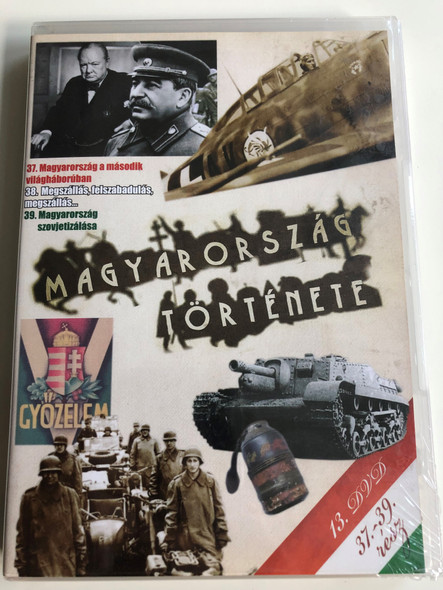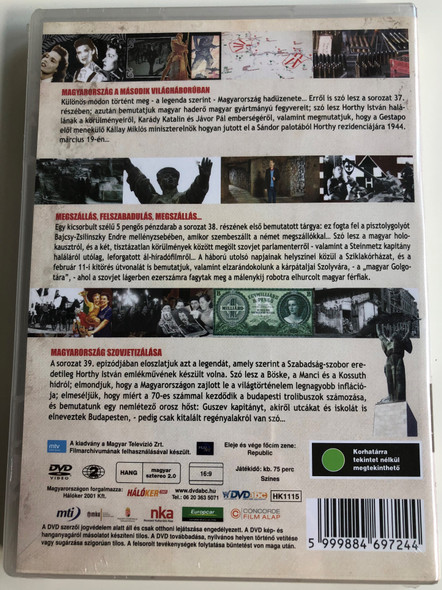Description
Megrendült a világ DVD ROM A Nagy Imre és társai elleni per hangfelvétele és szó szerinti leirata / The trial against Imre Nagy - Audio recordings and transcripts / Magyar Országos Levéltár - Kossuth Kiadó / Editors: Hanák Gábor, Szabó Csaba
ISBN: 9789632005515 / 978-9632005515
ISBN-10: 9632005511
PC DVD ROM
Hungarian Description:
1958 februárjában, áprilisában és júniusában a Legfelsőbb Bíróság Népbírósági Tanácsa az MSZMP vezetőinek közvetlen felügyeletével pert folytatott Nagy Imre miniszterelnök és társai ellen.
Fél évszázaddal a döbbenetes események után végre hozzáférhetőek a per anyagai, mert a Magyar Országos Levéltár, az Állambiztonsági Szolgálatok Történeti Levéltára, együttműködésben az Országos Széchényi Könyvtár Történeti Interjúk Tárával a közelmúltban digitalizálta a per során keletkezett irat- és hangzóanyagot – a 12 tárgyalási nap 70 órányi hanganyagát szó szerint leírva és ellenőrizve 27 ezer oldal digitalizált képet eredményezett –, és sajtótájékoztató keretében bemutatta azt az Országos Széchényi Könyvtárban.
A per hanganyagát és szó szerinti leiratát a Kossuth Kiadó gondozásában megjelent Megrendült a világ című DVD–ROM tárja a nyilvánosság elé. A kiadvány a hanganyag és a szöveg egyidejű hallgatásán és olvasásán kívül lehetőséget kínál az egyes tárgyalási napok tartalomjegyzéke, a jegyzőkönyvekről készült fotók megtekintésére, valamint szó szerinti keresést tesz lehetővé a szövegben.
A peranyaghoz kapcsolódóan három tanulmány is olvasható a DVD-én:
- Hanák Gábor–Szabó Csaba: A Nagy Imre miniszterelnök és társai ellen indított per írott, képi és hangzó forrásainak digitalizálása;
- Kövér György: Losonczy Géza 1917–1957 (Az utolsó év; Az utolsó órák);
- Litván György: A Nagy Imre - per politikai háttere.
English Summary:
This DVD contains archival sound recordings that are synchronized with complete transcripts of the secret trials conducted in February-June 1958 which resulted in the execution of Nagy and others on charges of treason. Also included are essays and scanned copies of documents.
Imre Nagy (Hungarian: [ˈimrɛ ˈnɒɟ]; 7 June 1896 – 16 June 1958) was a Hungarian communist politician who served as Prime Minister and Chairman of the Council of Ministers of the Hungarian People's Republic from 1953 to 1955. In 1956 Nagy became leader of the Hungarian Revolution of 1956 against the Soviet-backed government, for which he was executed two years later.
Nagy was a committed communist from soon after the Russian Revolution, and through the 1920s he engaged in underground party activity in Hungary. Living in the Soviet Union from 1930, he served the Soviet NKVD secret police as an informer from 1933 to 1941, denouncing over 200 colleagues, who were then purged and arrested and 15 of whom were executed. Nagy returned to Hungary shortly before the end of World War II, and served in various offices as the Hungarian Working People's Party (MDP) took control of Hungary in the late 1940s and the country entered the Soviet sphere of influence. He played a key role in the ethnic cleansing (deportation, in this case) of hundreds of thousands of German-speaking Hungarians from 1945 to 1946 as Interior Minister of Hungary. Nagy became prime minister in 1953 and attempted to relax some of the harshest aspects of Mátyás Rákosi's Stalinist regime, but was subverted and eventually forced out of the government in 1955 by Rákosi's continuing influence as General Secretary of the MDP. Nagy remained popular with writers, intellectuals, and the common people, who saw him as an icon of reform against the hard-line elements in the Soviet-backed regime.
The outbreak of the Hungarian Revolution on 23 October 1956 saw Nagy elevated to the position of Prime Minister on 24 October as a central demand of the revolutionaries and common people. Nagy's reformist faction gained full control of the government, admitted non-communist politicians, dissolved the ÁVH secret police, promised democratic reforms, and unilaterally withdrew Hungary from the Warsaw Pact on 1 November. The Soviet Union launched a massive military invasion of Hungary on 4 November, forcibly deposing Nagy, who fled to the Embassy of Yugoslavia in Budapest. Nagy was lured out of the Embassy under false promises on 22 November, but was arrested and deported to Romania. On 16 June 1958, Nagy was tried and executed for treason alongside his closest allies, and his body was buried in an unmarked grave.
In June 1989, Nagy and other prominent figures of the 1956 Revolution were rehabilitated and reburied with full honours, an event that played a key role in the collapse of the Hungarian Socialist Workers' Party regime.






